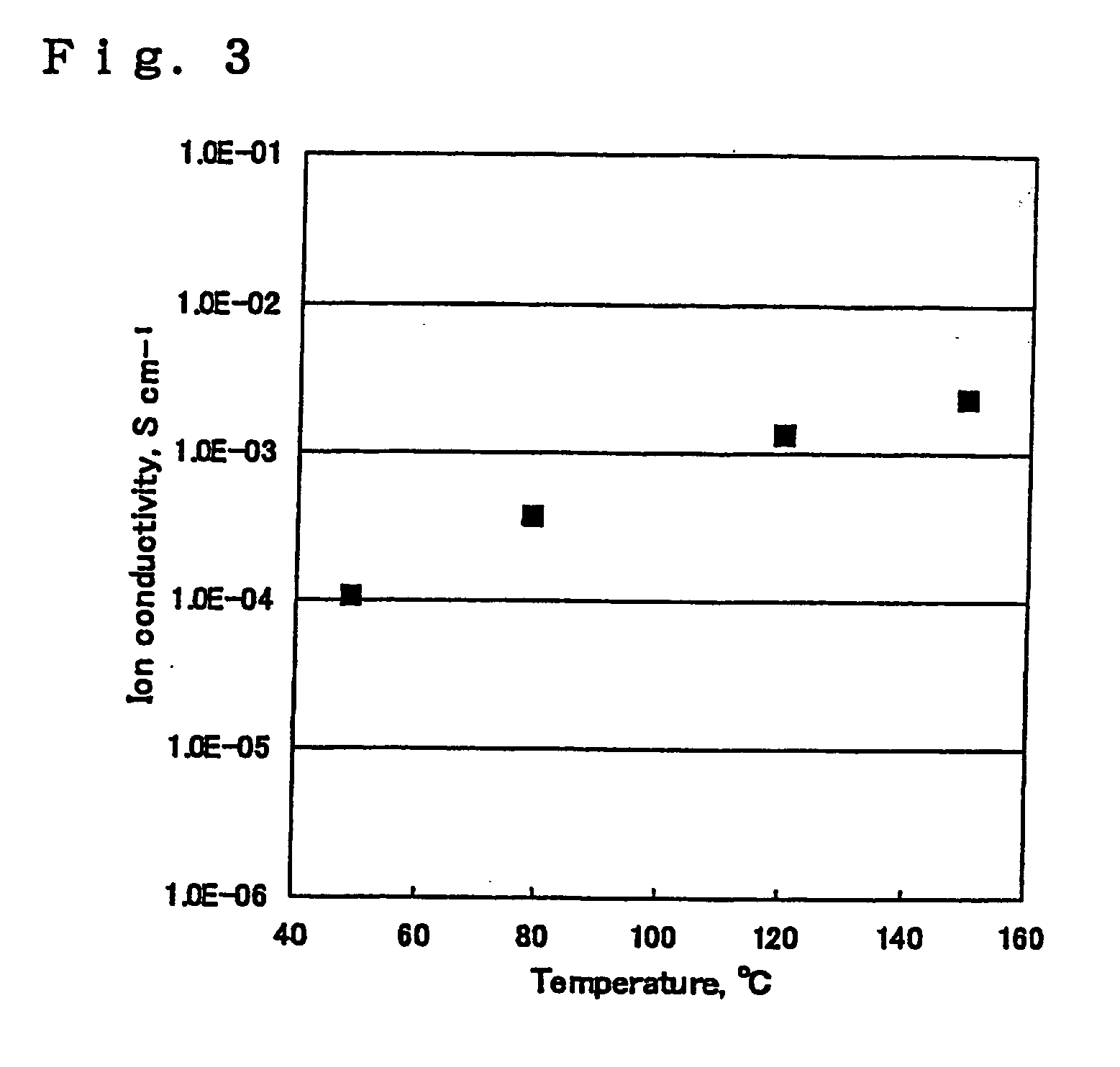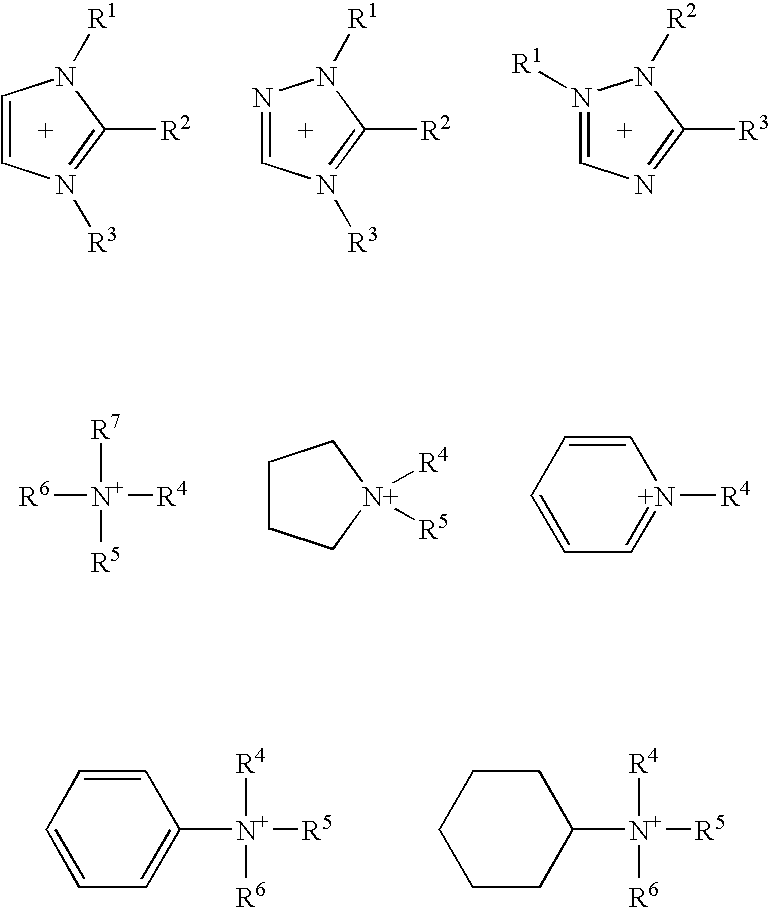Polyelectrolyte membrane and production method therefor
- Summary
- Abstract
- Description
- Claims
- Application Information
AI Technical Summary
Benefits of technology
Problems solved by technology
Method used
Image
Examples
synthesis example 1
[0101] In a four-necked separable flask equipped with a stirrer, a nitrogen inlet tube, and a gas outlet tube were put N,N-dimethylacetamide as a solvent and 4,4′-diaminodiphenyl ether as a diamine component. The mixture was stirred at 40° C. in a nitrogen atmosphere to make a solution. To the solution was added an equimolar amount, based on the diamine component, of 3,3′,4,4′-biphenyltetracarboxylic acid dianhydride in several divided portions. The mixture was allowed to react at 40° C. for about 12 hours while stirring to obtain a viscous polyamic acid solution having a solid content of 9.1 wt %. The resulting solution was cast on a mirror-finished SUS plate. A microporous polyolefin film (UP-3025, available from Ube Industries, Ltd.) was superposed on the polyamic acid solution cast film as a solvent exchange rate regulatory material. The laminated film structure was immersed in methanol and then in water to obtain a polyamic acid microporous membrane. The membrane was fixed on a...
synthesis example 2
[0108] In a four-necked separable flask equipped with a stirrer, a nitrogen inlet tube, and a gas outlet tube were put N,N-dimethylacetamide as a solvent and, as diamine components, 4,4′-diaminodiphenyl ether and 3,3′-dihydroxy-4,4′-diaminobiphenyl at a molar ratio of 6 / 4. The mixture was stirred at 40° C. in a nitrogen atmosphere to make a solution. To the solution was added an equimolar amount, based on the total diamine component, of 3,3′,4,4′-biphenyltetracarboxylic acid dianhydride in several divided portions. The mixture was allowed to react at 40° C. for about 12 hours while stirring to obtain a viscous polyamic acid solution having a solid content of 9.0 wt %. The resulting solution was cast on a mirror-finished SUS plate. A microporous polyolefin film (UP-3025, available from Ube Industries, Ltd.) was superposed on the polyamic acid solution cast film as a solvent exchange rate regulatory material. The laminated film structure was immersed in methanol and then in water to o...
synthesis example 3
[0115] To a solution of 16 g of N-ethylimidazole in 20 ml of ethanol was added dropwise 25 g of trifluoromethanesulfonic acid at 0° C. After returning to room temperature, the solution was stirred overnight and dried in vacuo at 60° C. for 16 hours to give N-ethylimidazolium trifluoromethanesulfonate (hereinafter referred to as EtIm+TfS−) as a colorless transparent liquid. The melting point of the resulting salt (literature value: 7.8° C.,) was measured by DSC analysis. As a result, endothermic peaks were observed at 6.3° C. and 21.0° C.
PUM
| Property | Measurement | Unit |
|---|---|---|
| Pore size | aaaaa | aaaaa |
| Percent by mass | aaaaa | aaaaa |
| Percent by volume | aaaaa | aaaaa |
Abstract
Description
Claims
Application Information
 Login to View More
Login to View More - R&D
- Intellectual Property
- Life Sciences
- Materials
- Tech Scout
- Unparalleled Data Quality
- Higher Quality Content
- 60% Fewer Hallucinations
Browse by: Latest US Patents, China's latest patents, Technical Efficacy Thesaurus, Application Domain, Technology Topic, Popular Technical Reports.
© 2025 PatSnap. All rights reserved.Legal|Privacy policy|Modern Slavery Act Transparency Statement|Sitemap|About US| Contact US: help@patsnap.com



